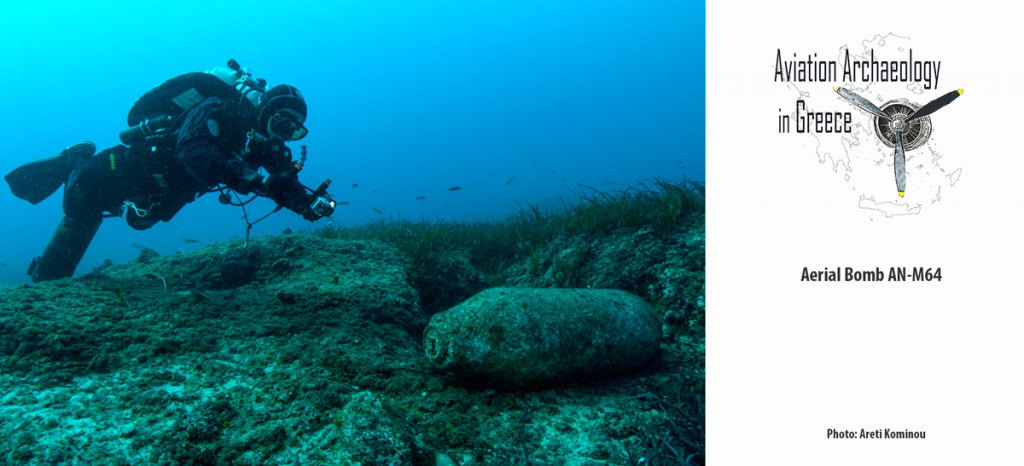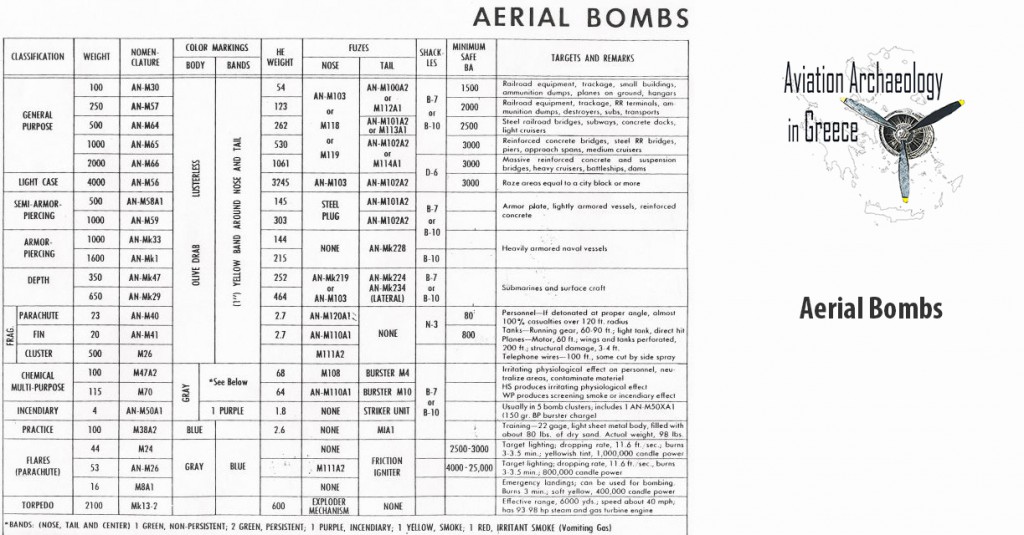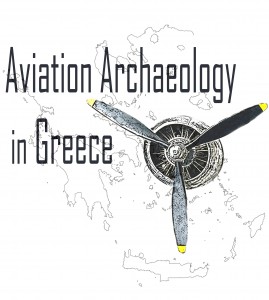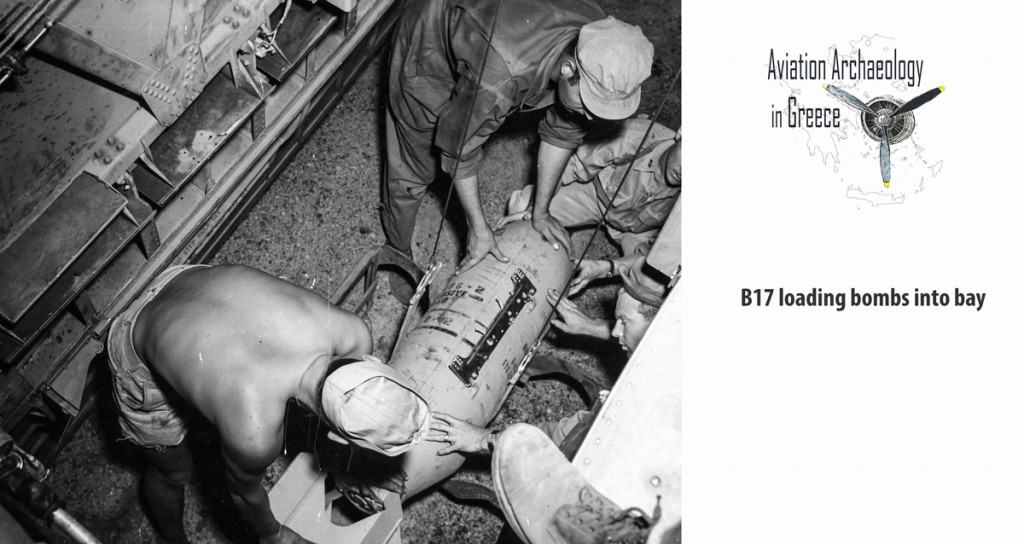Έρευνα – Επιμέλεια κειμένου: Νίκος Καρατζάς
![]() Στη διάρκεια ερευνητικών καταδύσεων στα «Ναρκοπέδια Σαρωνικού» εντοπίστηκαν νότια της νησίδας Πατρόκλου (Γαϊδουρονήσι) δυο βόμβες ΑΝ-Μ64, τύπου G.P.(General Purpose) αμερικάνικης κατασκευής. Από τις βόμβες έχει αποκολληθεί το ουραίο τμήμα το οποίο και εντοπίστηκε σε κοντινή απόσταση.
Στη διάρκεια ερευνητικών καταδύσεων στα «Ναρκοπέδια Σαρωνικού» εντοπίστηκαν νότια της νησίδας Πατρόκλου (Γαϊδουρονήσι) δυο βόμβες ΑΝ-Μ64, τύπου G.P.(General Purpose) αμερικάνικης κατασκευής. Από τις βόμβες έχει αποκολληθεί το ουραίο τμήμα το οποίο και εντοπίστηκε σε κοντινή απόσταση.

Οι AN-M64 χρησιμοποιήθηκαν σαν βόμβες γενικής χρήσης 500lb, με εκρηκτικό φορτίο που αποτελούνταν από 267 lbs TNT ή 274 lbs “Σύνθεση Β”. Ήταν βαμμένη σε χρώμα χακί με μια κίτρινη ρίγα για τη σήμανση του κέντρου βάρους.
Το ελάχιστο ασφαλές ύψος ρίψης ήταν τα 2500 πόδια. Στα έγγραφα της USAAF αναφέρεται η χρήση της AN-M64 σε στόχους όπως σιδηροδρομικές γραμμές, γέφυρες, μικρά σκάφη, αποβάθρες.
Βόμβες ΑΝ-Μ64 έφεραν βομβαρδιστικά αεροσκάφη τύπου Β-17, Β-24 καθώς και Β-26 Marauder.
Από τα αρχεία βρέθηκαν δυο επιθέσεις αμερικάνικων αεροσκαφών εναντίον γερμανικών στόχων που να δικαιολογούν την παρουσία των βομβών στο σημείο. Η πρώτη επίθεση προέρχεται από το Ημερολόγιο Πολέμου της 21. U_Jägerflottille και αναφέρεται στον βομβαρδισμό των πλοίων BULGARIA και DRACHE στα νότια του Σουνίου από αεροσκάφη Bristol Blenheim την 3.1.1943.
Από τα αρχεία του German Naval Group Command South αναφέρεται επίθεση από αεροσκάφη Vikers Welligton ενώ άλλη αναφορά σαν αεροσκάφη επιδρομής αναφέρονται τα B-26 Marauder όπου στην συγκεκριμένη επιδρομή καταρρίφθηκε το Β-26 FK375/D ‘Dominion Revenge’ c/n 41-7396. https://aviationarchaeology.gr/?p=196
Η δεύτερη αναφέρεται σε επιδρομή βομβαρδισμού του Λιμένα Πειραιώς και του αεροδρομίου Χασάνι στις 17.11.1943 από Β-17 με πορεία προς το στόχο επάνω από το Λαγονήσι και εγκατάλειψη επάνω από την Πελοπόννησο.
Καταδυτική ομάδα:
- Αρετή Κομηνού
- Τάσος Χατζηλιάδης
- Παναγιώτης Βλέτσας
- Τάσος Τσαλαβούτας
- Κώστας Μιχάλαινας
- Γιώργος Κολίκης
- Αποστόλης Κυπραίος
- Νίκος Καρατζάς
![]() The American version of the 500 lb general purpose bomb was the AN-M64. It’s explosive charge consisted of either 267 lbs of TNT, 262 lbs of Amatol, or 274 lbs of Composition B. The AN-M64 was painted olive drab with a 1″ yellow stripe marking the center of gravity, with a stripe around the nose and rear of the bomb. It was 57″ long and 14″ in diameter with a 0.3″ thick steel casing.
The American version of the 500 lb general purpose bomb was the AN-M64. It’s explosive charge consisted of either 267 lbs of TNT, 262 lbs of Amatol, or 274 lbs of Composition B. The AN-M64 was painted olive drab with a 1″ yellow stripe marking the center of gravity, with a stripe around the nose and rear of the bomb. It was 57″ long and 14″ in diameter with a 0.3″ thick steel casing.
The minium safe drop altitude listed for the AN-M64 was 2500 feet. USAAF documentation listed target examples of: „Steel railroad bridges, subways, concrete docks, light cruisers“.

http://www.303rdbg.com/bombs.html
The General Purpose (GP) bombs used in the early missions were fitted with quarter second delay tail fuses with an extra tenth of a second fuse in the nose. In a report in December 1942, after the raid on Lille, it was calculated that 30 percent of the bombs dropped had failed to explode
because the arming mechanisms had frozen up after being exposed the damp conditions on the airfields overnight. Standard Operating Procedure was soon changed so that fuses were installed just before take off. Eventually, to avoid accidents in landing, fuses were to be inserted only when the bombs
were securely fixed into the aircraft.

In 1943, a new set of GP bombs were produced: the M57 250lb, M64 500lb, M65 1000lb and M66 2000lb. These accounted for most of the bombs dropped in the final year of the war. In January 1945, experts recommended 250lb GP bombs to be used against synthetic oil plants,
ammunition dumps and oil storage facilities. the 100lb bomb was recommended for attacking railway yards and runways.
The team:
- Areti Kominou (photos)
- Nikos Karatzas
- Tasos Hatziliadis
- Panagiotis Vletsas
- Tasos Tsalavoutas
- Kostas Michalenas
- Tolis Kipreos
- George Kolikis





